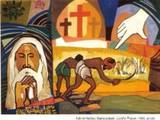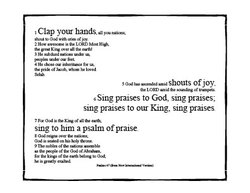During this past Lenten season my congregation made space in the liturgy, just after the call to worship and before the communal prayer of confession, for testimony from members of the congregation. The tradition of offering public testimony has faded from many mainline congregations, especially those committed to liturgical worship. The Presbyterian congregation (PCUSA) I am currently serving as a temporary supply pastor is very much committed to classical forms of worship, but wanted to find a way to recover the tradition of testimony in ways consonant with that form of worship.
Here’s what we did: During Lent we focused on the ways in which Jesus violates our expectations. Each week someone from the congregation offered a reflection how God had worked unexpectedly in his or her life, on ways in which God had violated expectations about what a good life ought to be. Testimonies lasted no more than two minutes, each one beginning and ending with the phrase, “the light shined in the darkness, and the darkness did not overcome it.” We created a “Lenten Wreath” similar to an Advent Wreath, except that instead of lighting one candle each week, we extinguished one after each testimony. By Passion Sunday, the wreath was as dark as a sealed tomb.
Members shared stories about the death of a child, the pain of divorce, and the fear of rejection. In the midst of a loving, supportive congregation, we learned to be honest and vulnerable with each other.
Continue reading...

